Vue d'ensemble Plaquettes de coupe en carbure de tungstène
Les plaquettes de coupe en carbure de tungstène sont une pierre angulaire dans le monde de l'usinage et de la fabrication. Ces plaquettes, fabriquées dans un matériau dur et durable, offrent d'excellentes performances en matière de coupe, de façonnage et de finition des pièces métalliques. Si vous êtes à la recherche d'outils de coupe de premier ordre, il est essentiel de comprendre les subtilités des plaquettes en carbure de tungstène. De leurs propriétés à leurs applications, en passant par le choix de la bonne plaquette, nous vous proposons un guide complet.
Que sont les plaquettes de coupe en carbure de tungstène ?
Les plaquettes de coupe en carbure de tungstène sont de petits outils de coupe remplaçables utilisés dans l'usinage pour couper et façonner les métaux et autres matériaux. Elles sont appréciées pour leur dureté exceptionnelle, leur résistance à l'usure et leur capacité à maintenir une arête de coupe vive, ce qui les rend idéales pour les tâches d'usinage à grande vitesse et de précision.
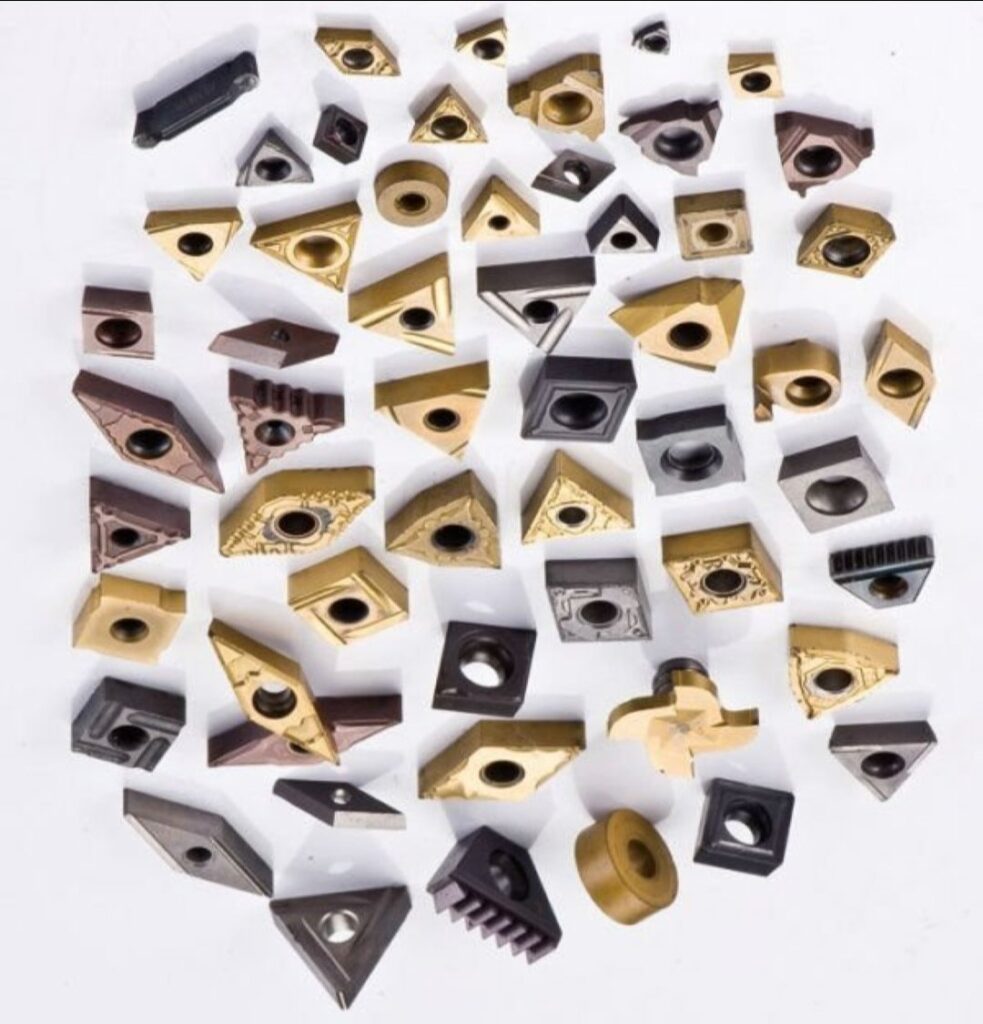
Types de plaquettes de coupe en carbure de tungstène
Comprendre les différents types de plaquettes de coupe en carbure de tungstène peut vous aider à sélectionner l'outil le mieux adapté à vos besoins spécifiques. Voici quelques-uns des principaux types :
| Type d'insert | Description |
|---|---|
| CNMG | Plaquette polyvalente avec une forme de diamant à 80 degrés, adaptée aux opérations d'ébauche et de finition. |
| WNMG | Plaquette triangulaire avec un angle de 80 degrés, idéale pour les applications générales de tournage. |
| TNMG | Insert triangulaire avec un angle de 60 degrés, idéal pour les tâches moyennes à finales. |
| CCMT | Insert carré avec une seule face, parfait pour les travaux de finition. |
| DCMT | Plaquette en forme de diamant avec un angle de 55 degrés, utilisée pour la finition et le tournage de précision. |
| VCMT | Plaquette en forme de diamant avec un angle de 35 degrés, idéale pour les finitions fines. |
| SNMG | Plaquette carrée avec une arête de coupe solide, adaptée aux opérations d'ébauche. |
| APKT | Plaquette rectangulaire avec une géométrie positive avancée, excellente pour le fraisage. |
| RPMT | Plaquette ronde idéale pour le fraisage de profil et les vitesses d'avance élevées. |
| SPMG | Plaquette carrée avec une inclinaison positive, utilisée dans les applications de rainurage et de tronçonnage. |
Applications de la Plaquettes de coupe en carbure de tungstène
Les plaquettes en carbure de tungstène sont utilisées dans diverses industries en raison de leur durabilité et de leur efficacité. Voici quelques applications courantes :
| Application | Description |
|---|---|
| Industrie automobile | Utilisé dans la fabrication de composants de moteurs, de pièces de transmission et d'autres systèmes critiques. |
| Industrie aérospatiale | Essentiel pour l'usinage de précision des alliages à haute résistance utilisés dans les composants aéronautiques. |
| Fabrication de dispositifs médicaux | Utilisé pour la fabrication d'instruments médicaux et d'implants complexes et précis. |
| Industrie du pétrole et du gaz | Utilisé dans la production d'équipements de forage et d'autres composants à forte usure. |
| Fabrication d'outils et de matrices | Idéal pour créer des moules et des matrices utilisés dans l'emboutissage des métaux et le moulage par injection de plastique. |
| Fabrication générale | Polyvalent pour une variété de tâches d'usinage dans la production de diverses pièces métalliques. |
Propriétés matérielles du carbure de tungstène
L'efficacité des plaquettes en carbure de tungstène est largement due à leurs propriétés matérielles supérieures. Entrons dans le vif du sujet :
| Propriété | Description |
|---|---|
| Dureté | Extrêmement élevés, généralement entre 85 et 92 HRA, ils permettent de découper des matériaux résistants. |
| Solidité | Bonne ténacité pour résister aux impacts et aux chocs pendant l'usinage. |
| Résistance à l'usure | Excellente résistance à l'usure, garantissant une longue durée de vie de l'outil et des performances constantes. |
| Conductivité thermique | La conductivité thermique élevée permet de dissiper la chaleur et de préserver l'intégrité de l'outil et la qualité de la pièce. |
| Stabilité chimique | Résistants aux réactions chimiques, ils conviennent à l'usinage de matériaux réactifs. |
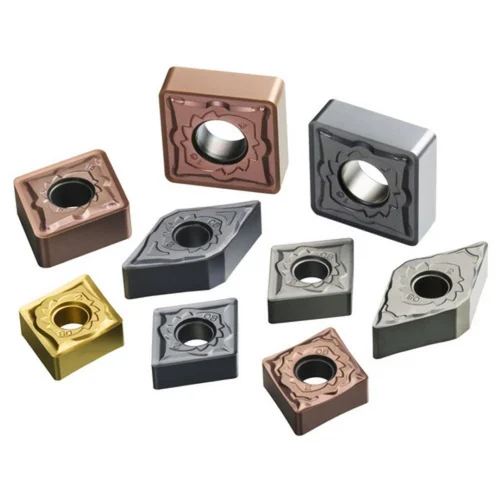
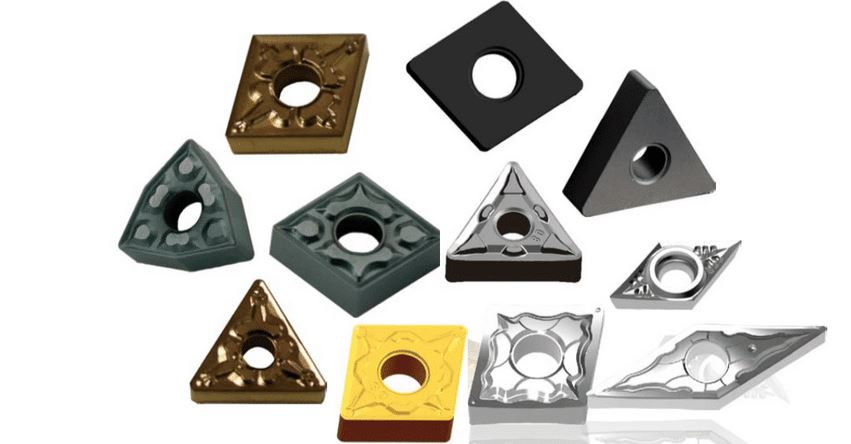
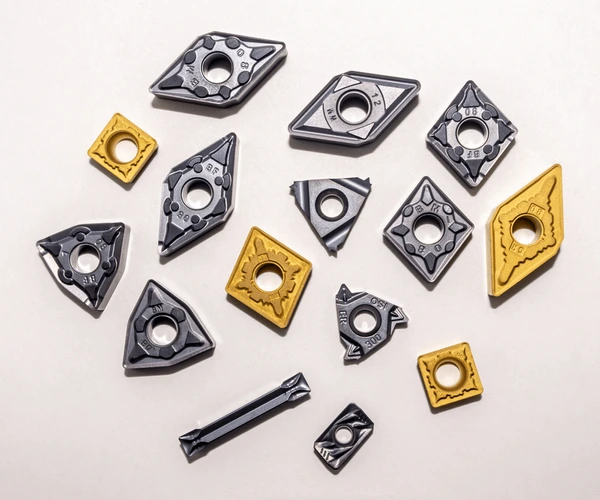

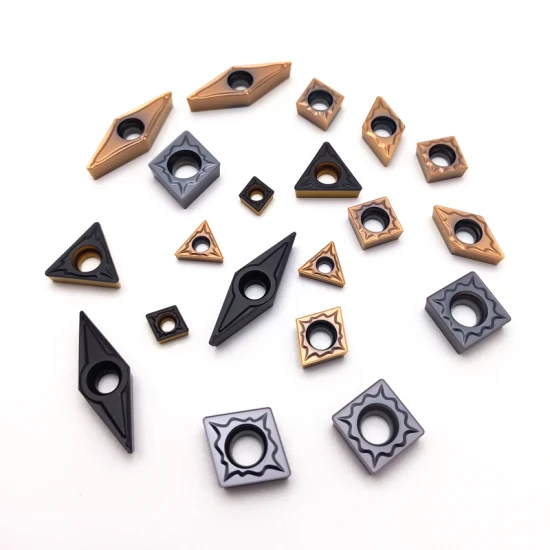
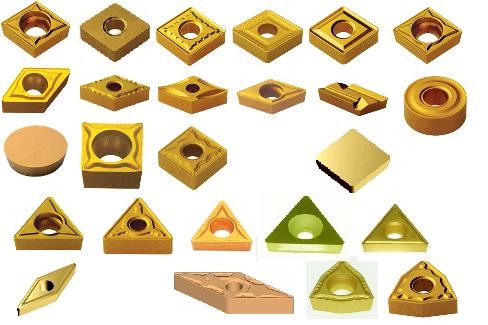
Composition et caractéristiques des plaquettes en carbure de tungstène
Les plaquettes en carbure de tungstène sont généralement composées de particules de carbure de tungstène liées à un métal, souvent du cobalt. Voici un aperçu de leur composition et de leurs caractéristiques :
| Composant | Pourcentage | Caractéristique |
|---|---|---|
| Carbure de tungstène | 70-94% | Assure la dureté et la résistance à l'usure. |
| Liant en cobalt | 6-30% | Ajoute de la robustesse et de la force de liaison. |
| Autres additifs | Jusqu'à 5% | Améliore les propriétés spécifiques telles que la résistance à l'oxydation et la croissance du grain. |
Dureté, solidité et résistance à l'usure
Les plaquettes de coupe en carbure de tungstène sont connues pour leur dureté, leur solidité et leur résistance à l'usure impressionnantes. Voici un aperçu comparatif :
| Métrique | Plage de valeurs | Importance |
|---|---|---|
| Dureté (HRA) | 85-92 | Détermine la capacité à couper des matériaux durs sans déformation. |
| Résistance à la compression | 4000-9000 MPa | Indique la charge de compression maximale que le matériau peut supporter. |
| Résistance à l'usure | Haut | Garantit des performances durables et une réduction des changements d'outils. |
Spécifications, tailles, formes et normes
Lorsque l'on sélectionne plaquettes de coupe en carbure de tungstèneIl est donc essentiel de tenir compte de leurs spécifications, de leurs tailles, de leurs formes et des normes qui s'y rapportent :
| Spécifications | Détail |
|---|---|
| Normes ISO | Conforme aux normes internationales telles que la norme ISO 1832 pour les formes et les tailles d'inserts. |
| Normes ANSI | Respect des directives de l'American National Standards Institute en matière de cohérence et de compatibilité. |
| Gamme de tailles | Disponible dans une large gamme de tailles pour s'adapter à différents porte-outils et applications. |
| Variétés de formes | Comprend des formes carrées, triangulaires, diamantées et rondes pour répondre aux différentes tâches d'usinage. |
Fournisseurs et détails des prix
Le marché des plaquettes de coupe en carbure de tungstène est diversifié, de nombreux fournisseurs proposant des produits variés. Voici quelques fournisseurs importants et les détails de leurs prix :
| Fournisseur | Fourchette de prix | Caractéristiques spéciales |
|---|---|---|
| Kennametal | $10 - $50 par insert | Renommée pour ses solutions de coupe innovantes et de haute qualité. |
| Sandvik Coromant | $15 - $60 par insert | Offre une large gamme d'inserts avec des revêtements avancés pour des performances accrues. |
| Matériaux Mitsubishi | $12 - $55 par insert | Reconnus pour leur précision et leur durabilité dans l'usinage à grande vitesse. |
| ISCAR | $10 - $45 par insert | Fournit des solutions rentables avec une excellente résistance à l'usure. |
| Sumitomo Electric | $13 - $50 par insert | Spécialisé dans les inserts à haute ténacité et stabilité thermique. |
Comment choisir les bonnes plaquettes de coupe en carbure de tungstène ?
Pour choisir les plaquettes de coupe en carbure de tungstène appropriées, il faut tenir compte de divers facteurs tels que la compatibilité des matériaux, les conditions d'usinage et l'état de surface souhaité. Voici un guide pour vous aider à faire le bon choix :
| Considération | Détail |
|---|---|
| Matériau à usiner | Différentes plaquettes sont optimisées pour différents matériaux tels que l'acier, la fonte ou les métaux non ferreux. |
| Conditions d'usinage | Des facteurs tels que la vitesse de coupe, la vitesse d'avance et la profondeur de coupe influencent la sélection. |
| Compatibilité des porte-outils | Assurez-vous que l'insert est adapté au porte-outil utilisé dans votre machine. |
| Finition de surface souhaitée | Choisissez des plaquettes conçues pour les opérations d'ébauche ou de finition afin d'obtenir la finition souhaitée. |
Avantages et limites des plaquettes de coupe en carbure de tungstène
Les plaquettes de coupe en carbure de tungstène ont leurs propres avantages et limites. Les comprendre peut vous aider à prendre une décision en connaissance de cause :
| Aspect | Avantage | Limitation |
|---|---|---|
| Dureté | Peut usiner facilement des matériaux très durs. | Peut être sujet à la fragilité en cas d'impact important. |
| Résistance à l'usure | Longue durée de vie de l'outil, réduisant le besoin de remplacements fréquents. | Coût initial plus élevé que celui d'autres matériaux. |
| Conductivité thermique | Maintient l'intégrité de l'outil et la qualité de la pièce en dissipant la chaleur. | Nécessite des systèmes de refroidissement appropriés pour éviter la surchauffe. |
| Polyvalence | Convient à une large gamme de matériaux et d'applications. | Peut nécessiter des qualités et des revêtements différents pour des tâches spécifiques. |
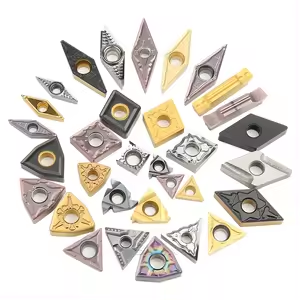
Conclusion
Plaquettes de coupe en carbure de tungstène sont des outils indispensables à l'usinage moderne, car ils offrent une dureté, une résistance à l'usure et une polyvalence inégalées. Que vous travailliez dans l'industrie automobile, aérospatiale ou générale, le choix de la bonne plaquette en carbure de tungstène peut considérablement améliorer votre efficacité d'usinage et la qualité de vos produits.
FAQ
| Question | Réponse |
|---|---|
| Qu'est-ce que le carbure de tungstène ? | Matériau dur et résistant à l'usure, composé de tungstène et de carbone. |
| Pourquoi les plaquettes en carbure de tungstène sont-elles privilégiées dans l'usinage ? | En raison de leur dureté exceptionnelle, de leur durabilité et de leur capacité à conserver un bord tranchant. |
| Les plaquettes en carbure de tungstène peuvent-elles être utilisées sur tous les matériaux ? | Ils conviennent à la plupart des métaux, mais des qualités spécifiques sont optimisées pour différents matériaux. |
| Comment choisir la bonne forme d'insert ? | En fonction de l'opération d'usinage, de la compatibilité du porte-outil et de la finition souhaitée. |
| Existe-t-il différentes qualités de carbure de tungstène ? | Oui, dont la dureté et la résistance varient en fonction des applications. |
| Quelles sont les formes courantes des plaquettes en carbure de tungstène ? | Formes carrées, triangulaires, losanges et rondes. |
| Comment entretenir les plaquettes en carbure de tungstène ? | Inspection régulière, stockage adéquat et utilisation des paramètres d'usinage appropriés. |
| Où puis-je acheter des plaquettes de coupe en carbure de tungstène ? | De fournisseurs tels que Kennametal, Sandvik Coromant, Mitsubishi Materials, ISCAR et Sumitomo Electric. |




